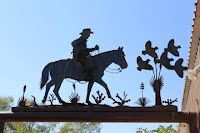FAQ
The Story Behind It All

Important Terms
| Jennet: Female Donkey Jack: Male Donkey Herd Sire: An exceptional jack used to sire foals in a breeding program Gelding: Castrated male (can no longer reproduce) Foal: Baby Donkey |
 |
Basic “Mini” Facts
- Miniature Donkeys are truly a life long companion. With proper care and nutrition, their life span is 25 to 35+ years.
- Miniature Donkeys average between 29″ and 34″ at the withers, with a maximum of 36″.
- The average adult Miniature Donkey weighs between 200-350 pounds.
- The most common color for the Miniature Donkey is a slate gray color. Other colors are tans, browns, dark browns, black/brown, black (rare), sorrels, white, and spotted. The majority of donkeys have a cross at the withers that runs down the shoulders and back. Miniature Donkeys usually have a white muzzle and white markings around their eyes know as “points”. A Miniature Donkey with a black nose and no white eye rings is called a Miniature Donkey with no light points (NLP). While a variety of color adds interest to the Miniature Donkey breed, breeding for color should never be put before conformation.
- A Miniature Donkey should have a well balanced look. This means that no part of the donkey should attract immediate attention, for example, head too small or too large, or the rump of the donkey being much higher than the wither. If you plan to breed your Miniature Donkeys, you must first verify that your donkeys are breeding quality and you must assure you have carefully selected your breeding pair. The American Donkey and Mule Society can provide you with complete conformation guidelines. We are always happy to assist new breeders! A great place to learn more about conformation is at http://www.lovelongears.com/.
- Our donkeys are registered with The American Donkey and Mule Society (ADMS). Their website is an excellent resource for information, registration requirements, editorials and events relating to all longears. www.lovelongears.com.
“Mini” Use

Wild Miniature Donkeys are capable of carrying about 100 pounds of cargo over a long distance. Miniature Donkeys are often used as pet companions. People who own a Miniature Donkey can say they are the perfect pets: affectionate, soft, cuddly, and trustworthy around children and the handicapped. Mature Donkeys can be easily trained to pull carts or wagons, are able to take part in parades or shows, and may be ridden even by small children. Miniature Donkeys are not aggressive and become attached to the herd mates and their masters. Females of Miniature Donkeys are devoted mothers and protective to other foals in the herd.